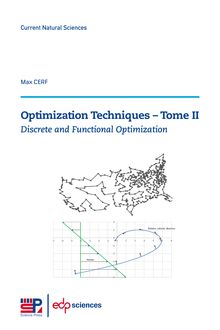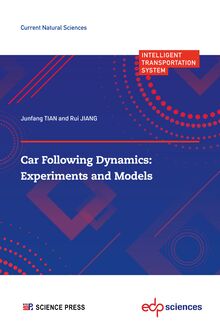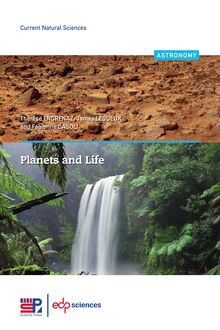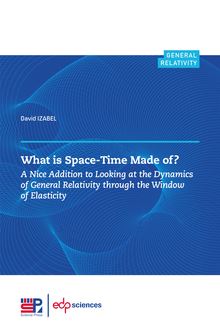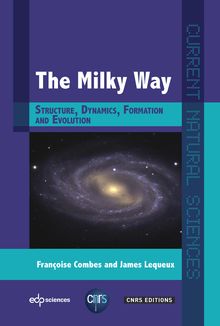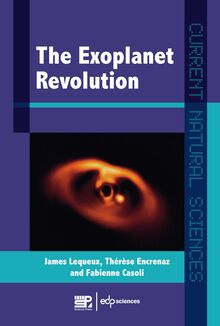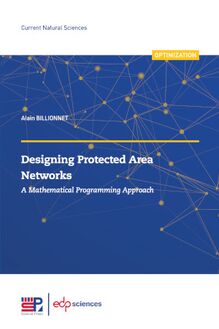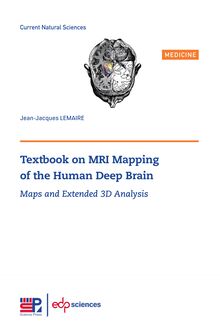-
 Univers
Univers
-
 Ebooks
Ebooks
-
 Livres audio
Livres audio
-
 Presse
Presse
-
 Podcasts
Podcasts
-
 BD
BD
-
 Documents
Documents
-
- Cours
- Révisions
- Ressources pédagogiques
- Sciences de l’éducation
- Manuels scolaires
- Langues
- Travaux de classe
- Annales de BEP
- Etudes supérieures
- Maternelle et primaire
- Fiches de lecture
- Orientation scolaire
- Méthodologie
- Corrigés de devoir
- Annales d’examens et concours
- Annales du bac
- Annales du brevet
- Rapports de stage
La lecture à portée de main
Découvre YouScribe en t'inscrivant gratuitement
Je m'inscrisDécouvre YouScribe en t'inscrivant gratuitement
Je m'inscrisEn savoir plus
En savoir plus

Description
In a world where intergalactic wars are a common topic for movies, it is hard to imagine that the discovery of galaxies was made less than a century ago. In fact, it was one of the key astrophysical milestones of the first half of the 20th century, along with the revelation of the expansion of the Universe and the understanding of the source of the stars’ energy.
The second half of last century saw the unexpected discovery of fantastic objects and extreme events in the Universe including neutron stars, black holes, radio galaxies, quasars, exoplanets, or stellar explosions. Modern cosmology was simultaneously established with the Big Bang model, leading to an astonishingly precise determination of the parameters of the Universe.
The author here retraces the adventure of twentieth-century astronomy and describes how it has changed our vision of the cosmos. By assessing the major successes of this undertaking and highlighting the fundamental questions that still remain, he puts into perspective the recent progress at the dawn of the new millennium including the acceleration of the expansion of the Universe and dark energy, dark matter, exoplanets, black hole mergers and gravitational waves, to name only the most spectacular discoveries. This book thus offers, in a concise and accessible form, a synthesis of our current knowledge of astrophysics, including many beautiful images from leading observatories.
Contents
General Summary . . . . . . . . . . . . . . . . . . . . . . . . . . . . . . . . . . . . . . . . . . . . . III
Acknowledgments . . . . . . . . . . . . . . . . . . . . . . . . . . . . . . . . . . . . . . . . . . . . . VII
Part I A Century of Revolution in Our Vision of the Universe . . . . . . . . . . 1
CHAPTER 1
General View of 20th Century Astronomy and Its Starting Point . . . . . . . . . 3
1.1 Astronomy, the Key to Our Vision of the World . . . . . . . . . . . . . . . . . 3
1.2 Benchmarks on 1900 Astronomy and Its Shortcomings . . . . . . . . . . . . 7
CHAPTER 2
Scientific and Technical Revolutions, Drivers of 20th Century Astronomy . . . 21
2.1 Physics Revolutions, Keys to Astrophysics . . . . . . . . . . . . . . . . . . . . . 21
2.2 Giant Telescopes . . . . . . . . . . . . . . . . . . . . . . . . . . . . . . . . . . . . . . . . . 22
2.3 Overcoming the Disturbances of the Earth Atmosphere. . . . . . . . . . . . 24
2.4 Exploiting All Spectral Domains from Radio to X-ray and Gamma-ray . . . . . . . . . . . . . . . . . . . . . . . . . . . . . . . . . . . . . . . . . 29
2.5 Visiting the Planets . . . . . . . . . . . . . . . . . . . . . . . . . . . . . . . . . . . . . . 35
2.6 No Pause in the Progress of Signal Detection and Exploitation . . . . . . 35
Part II Stars are Well Understood . . . . . . . . . . . . . . . . . . . . . . . . . . . . . . . 39
CHAPTER 3
How does a Star Work? . . . . . . . . . . . . . . . . . . . . . . . . . . . . . . . . . . . . . . . . 41
3.1 Understanding the Stars . . . . . . . . . . . . . . . . . . . . . . . . . . . . . . . . . . . 41
3.2 Solving the Mystery of the Origin of the Energy of the Sun and the Stars . . . . . . . . . . . . . . . . . . . . . . . . . . . . . . . . . . . 42
3.3 The Life of the Stars . . . . . . . . . . . . . . . . . . . . . . . . . . . . . . . . . . . . . . 46
3.4 Our Atoms were Born in the Stars . . . . . . . . . . . . . . . . . . . . . . . . . . . 51
3.5 Stars also Die . . . . . . . . . . . . . . . . . . . . . . . . . . . . . . . . . . . . . . . . . . 52
CHAPTER 4
Complexities of Star Birth and Physics . . . . . . . . . . . . . . . . . . . . . . . . . . . . . 57
4.1 General Star Formation Scenario . . . . . . . . . . . . . . . . . . . . . . . . . . . . 57
4.2 Young Infrared Stars: Born in Dusty Cocoons . . . . . . . . . . . . . . . . . . . 59
4.3 Gravitational Contraction, Accretion and Discs. . . . . . . . . . . . . . . . . . 59
4.4 Universality of Stellar Pairs – Complex Ending of Their Lives . . . . . . . 61
4.5 Brown Dwarfs, Billions of Aborted Stars . . . . . . . . . . . . . . . . . . . . . . . 63
4.6 Stars are Still at the Forefront of Current Astronomy . . . . . . . . . . . . . 65
4.7 Stars and Ecology of Planets and Galaxies . . . . . . . . . . . . . . . . . . . . . 68
Part III The New World of Galaxies . . . . . . . . . . . . . . . . . . . . . . . . . . . . . 71
CHAPTER 5
Discovery of Galaxies . . . . . . . . . . . . . . . . . . . . . . . . . . . . . . . . . . . . . . . . . . 73
5.1 The Appreciation of the Nature of Galaxies Dates Back Only to the Beginning of the 20th Century . . . . . . . . . . . . . 73
5.2 First Steps in the World of Nearby Galaxies . . . . . . . . . . . . . . . . . . . . 77
5.3 Architecture and Stellar Content of Galaxies . . . . . . . . . . . . . . . . . . . . 81
CHAPTER 6
Our Galaxy and Its Interstellar Medium . . . . . . . . . . . . . . . . . . . . . . . . . . . . 83
6.1 Exploration of Our Galaxy, the Milky Way . . . . . . . . . . . . . . . . . . . . . 83
6.2 An Ordinary Galaxy . . . . . . . . . . . . . . . . . . . . . . . . . . . . . . . . . . . . . . 84
6.3 Current Organization of Stars Resulting from the Milky Way History . 86
6.4 The Interstellar Gas, a Key Player in the Evolution of Galaxies . . . . . 86
6.5 Other Players in the Interstellar Medium . . . . . . . . . . . . . . . . . . . . . . 90
6.6 Exotic Components of the Milky Way . . . . . . . . . . . . . . . . . . . . . . . . . 94
CHAPTER 7
Hundreds of Billions of Galaxies . . . . . . . . . . . . . . . . . . . . . . . . . . . . . . . . . . 97
7.1 Galaxies at All Stages of Their Life . . . . . . . . . . . . . . . . . . . . . . . . . . . 97
7.2 The Turbulent Family Life of Galaxies . . . . . . . . . . . . . . . . . . . . . . . . 99
7.3 Understanding the Formation and Evolution of Galaxies . . . . . . . . . . . 106
Part IV Cosmology, the Science of the Universe as a Whole . . . . . . . . . . . . 109
CHAPTER 8
Birth of Cosmology. . . . . . . . . . . . . . . . . . . . . . . . . . . . . . . . . . . . . . . . . . . . 111
8.1 The Universe of Galaxies is Expanding . . . . . . . . . . . . . . . . . . . . . . . . 111
8.2 The Saga of the Big Bang Confirmation . . . . . . . . . . . . . . . . . . . . . . . 114
8.3 The Very First Phase in the History of the Universe: Uncertain Physics . . . . . . . . . . . . . . . . . . . 116
8.4 AWell-Understood Second Phase: The Standard Big Bang Model . . . . 118
CHAPTER 9
Content of the Universe and Structure Formation . . . . . . . . . . . . . . . . . . . . . 123
9.1 Formation of Galaxies and Structures of the Present Universe . . . . . . . 123
9.2 Fundamental Parameters of the Universe are Better Known than Its Physics . . . . . . . . . . . . . . . . . . 125
9.3 Age of the Universe and Variations of the Determinations of the Hubble Constant . . . . . . . . . . . . . . 128
9.4 An Overall Density Very Close to the Critical Density . . . . . . . . . . . . 128
9.5 Need and Nature of Dark Matter . . . . . . . . . . . . . . . . . . . . . . . . . . . . 129
9.6 A Last-Minute Surprise, the Re-Acceleration of the Expansion Involving an Unknown Source of Cosmic Energy . . . . . . . 131
9.7 Summarizing: An Unexpected Universe Model Validated in Multiple Ways . . . . . . . . . . . . . . . . . . . . . . . . . . . . . . . . . . 132
Part V Singular Stars and Cataclysms in Extreme Physical Conditions . . . 135
CHAPTER 10
Explosions of Stars and Their Singular Residues . . . . . . . . . . . . . . . . . . . . . . 137
10.1 Extreme Physics of Supernova Implosion/Explosion . . . . . . . . . . . . . 137
10.2 Neutron Stars, Hyper-Dense Supernova Residues. . . . . . . . . . . . . . . . 145
10.3 Gamma-Ray Bursts, Even More Powerful Bursts . . . . . . . . . . . . . . . . 147
10.4 Cosmic Rays, Messenger Particles of the High Energy Universe . . . . . 149
CHAPTER 11
Black Holes and Their Power . . . . . . . . . . . . . . . . . . . . . . . . . . . . . . . . . . . . 155
11.1 Black Holes, General Relativity and the Cosmos . . . . . . . . . . . . . . . . 155
11.2 Stellar Black Holes . . . . . . . . . . . . . . . . . . . . . . . . . . . . . . . . . . . . . . 157
11.3 GravitationalWaves, Propagation of Spacetime-Curvature Disturbances. . . 158
11.4 Quasars: New Stars a Thousand Times Brighter than Galaxies . . . . . 162
11.5 Manifestations of Super-Massive Black Holes and Their Interpretation . . . 164
11.6 Co-evolution of Galaxies and Their Black Hole . . . . . . . . . . . . . . . . . 170
11.7 The Super-Massive Black Hole of Our Galaxy and Others . . . . . . . . . 171
Part VI Planets, in the Solar System and Outside . . . . . . . . . . . . . . . . . . . 173
CHAPTER 12
Direct Exploration of the Planets . . . . . . . . . . . . . . . . . . . . . . . . . . . . . . . . . 175
12.1 Planets, Stars of Astronomy until the 19th Century . . . . . . . . . . . . . 175
12.2 Half a Century Without Revolution for Planetology . . . . . . . . . . . . . 178
12.3 Humans Went to the Moon! . . . . . . . . . . . . . . . . . . . . . . . . . . . . . . . 180
12.4 We Broadly Understand the Origin of the Moon and Its Importance for the Earth . . . . . . . . . . . . . . . . . . . . . 181
12.5 Very Rich Close-up Photos of All the Bodies of the Solar System . . . 183
12.6 Summary of Planetary Expeditions . . . . . . . . . . . . . . . . . . . . . . . . . . 184
12.7 Searching for Life in the Solar System: Where and When? . . . . . . . . . 191
CHAPTER 13
Entering the Dream World of Exoplanets . . . . . . . . . . . . . . . . . . . . . . . . . . . 197
13.1 Explosion of Discoveries of New Planets . . . . . . . . . . . . . . . . . . . . . . 197
13.2 The Majority of Stars have a Planetary System. . . . . . . . . . . . . . . . . 201
13.3 Surprising Variety of Exoplanets . . . . . . . . . . . . . . . . . . . . . . . . . . . . 202
13.4 The Search for Earth-Like Planets. . . . . . . . . . . . . . . . . . . . . . . . . . . 204
Conclusion . . . . . . . . . . . . . . . . . . . . . . . . . . . . . . . . . . . . . . . . . . . . . . . . . . 209
CHAPTER 14
A New Cosmos in the 21st Century?. . . . . . . . . . . . . . . . . . . . . . . . . . . . . . . 211
14.1 A New Cosmos . . . . . . . . . . . . . . . . . . . . . . . . . . . . . . . . . . . . . . . . . 211
14.2 Auguries for 21st Century Astronomy? . . . . . . . . . . . . . . . . . . . . . . . 212
Glossary . . . . . . . . . . . . . . . . . . . . . . . . . . . . . . . . . . . . . . . . . . . . . . . . . . . . 217
Acronyms and Space Missions . . . . . . . . . . . . . . . . . . . . . . . . . . . . . . . . . . . 223
References . . . . . . . . . . . . . . . . . . . . . . . . . . . . . . . . . . . . . . . . . . . . . . . . . . 227
Index . . . . . . . . . . . . . . . . . . . . . . . . . . . . . . . . . . . . . . . . . . . . . . . . . . . . . . 231
The asterisks * indicate words or acronyms whose meaning is explained in the
“Glossary” or “Acronyms and space missions” sections at the end of the book.
Sujets
Informations
| Publié par | EDP Sciences |
| Date de parution | 07 avril 2022 |
| Nombre de lectures | 0 |
| EAN13 | 9782759827077 |
| Langue | English |
| Poids de l'ouvrage | 25 Mo |
Informations légales : prix de location à la page 1,2850€. Cette information est donnée uniquement à titre indicatif conformément à la législation en vigueur.
Extrait
A. OMONT
On the Edge of the Cosmos – A Century of Revolution in Astronomy
Current Natural Sciences Current Natural Sciences
ASTROPHYSICS ASTROPHYSICSOn the Edge of the Cosmos
A Century of Revolution in Astronomy
Alain OMONT
In a world where intergalactic wars are a common topic for movies, it
is hard to imagine that the discovery of galaxies was made less than
a century ago. In fact, it was one of the key astrophysical milestones
of the first half of the 20th century, along with the revelation of the
expansion of the Universe and the understanding of the source of
the stars’ energy. Alain OMONT
The second half of last century saw the unexpected discovery of
fantastic objects and extreme events in the Universe including
neutron stars, black holes, radio galaxies, quasars, exoplanets,
or stellar explosions. Modern cosmology was simultaneously
established with the Big Bang model, leading to an astonishingly On the Edge of the Cosmos
precise determination of the parameters of the Universe.
A Century of Revolution in AstronomyThe author here retraces the adventure of twentieth-century
astronomy and describes how it has changed our vision of the
cosmos. By assessing the major successes of this undertaking and
highlighting the fundamental questions that still remain, he puts into
perspective the recent progress at the dawn of the new millennium
including the acceleration of the expansion of the Universe and dark
energy, dark matter, exoplanets, black hole mergers and gravitational
waves, to name only the most spectacular discoveries. This book
thus offers, in a concise and accessible form, a synthesis of our
current knowledge of astrophysics, including many beautiful
images from leading observatories.
Alain OMONT is involved in various international collaborations
using major astronomical ground and space-based instruments.
He was the first director of the Grenoble Observatory, then director
of the Institut d’Astrophysique de Paris (Sorbonne University-CNRS)
where he is now Emeritus Research Director at the CNRS.
ISBN : 978-2-7598-2706-0
9 782759 827060
www.edpsciences.orgA. OMONT
On the Edge of the Cosmos – A Century of Revolution in Astronomy
Current Natural Sciences Current Natural Sciences
ASTROPHYSICS ASTROPHYSICSOn the Edge of the Cosmos
A Century of Revolution in Astronomy
Alain OMONT
In a world where intergalactic wars are a common topic for movies, it
is hard to imagine that the discovery of galaxies was made less than
a century ago. In fact, it was one of the key astrophysical milestones
of the first half of the 20th century, along with the revelation of the
expansion of the Universe and the understanding of the source of
the stars’ energy. Alain OMONT
The second half of last century saw the unexpected discovery of
fantastic objects and extreme events in the Universe including
neutron stars, black holes, radio galaxies, quasars, exoplanets,
or stellar explosions. Modern cosmology was simultaneously
established with the Big Bang model, leading to an astonishingly On the Edge of the Cosmos
precise determination of the parameters of the Universe.
A Century of Revolution in AstronomyThe author here retraces the adventure of twentieth-century
astronomy and describes how it has changed our vision of the
cosmos. By assessing the major successes of this undertaking and
highlighting the fundamental questions that still remain, he puts into
perspective the recent progress at the dawn of the new millennium
including the acceleration of the expansion of the Universe and dark
energy, dark matter, exoplanets, black hole mergers and gravitational
waves, to name only the most spectacular discoveries. This book
thus offers, in a concise and accessible form, a synthesis of our
current knowledge of astrophysics, including many beautiful
images from leading observatories.
Alain OMONT is involved in various international collaborations
using major astronomical ground and space-based instruments.
He was the first director of the Grenoble Observatory, then director
of the Institut d’Astrophysique de Paris (Sorbonne University-CNRS)
where he is now Emeritus Research Director at the CNRS.
ISBN : 978-2-7598-2706-0
9 782759 827060
www.edpsciences.orgCurrent Natural Sciences
Alain OMONT
On the Edge
of the Cosmos
A Century of Revolution in AstronomyCover illustration: The Antennae Galaxies (also known as NGC 4038 and 4039) are a
pair of distorted colliding spiral galaxies about 70 million light-years away, in the
constellation of Corvus (The Crow). This view combines ALMA observations, made in
two different wavelength ranges during the observatory's early testing phase, with
visible-light observations from the NASA/ESA Hubble Space Telescope.
Source: https://www.eso.org/public/images/eso1137a/ (CC BY 4.0).
Printed in France
EDP Sciences – ISBN(print): 978-2-7598-2706-0 – ISBN(ebook): 978-2-7598-2707-7
DOI: 10.1051/978-2-7598-2706-0
All rights relative to translation, adaptation and reproductionbyany means whatsoever
arereserved,worldwide.Inaccordancewiththetermsofparagraphs2and3ofArticle41
of the French Act dated March 11, 1957, “copies or reproductions reserved strictly for
private use and not intended for collective use” and, on the other hand, analyses and
short quotations for example or illustrative purposes, are allowed. Otherwise, “any
representation or reproduction – whether in full or in part – without the consent of the
author or of his successors or assigns, is unlawful” (Article 40, paragraph 1). Any
representation or reproduction, by any means whatsoever, will therefore be deemed an
infringement of copyright punishable under Articles 425 and following of the French
Penal Code.
Science Press, EDP Sciences, 2022General Summary
Astronomyhasbeenoneofthefastestgrowingsciencesintherecentdecades,afield
whereasuccessionofmajordiscoverieswasfollowedbyallaudienceswithpassionate
interest.Thepurposeofthisbookistopresentthemajorachievementsinastronomy
in the last century in a succinct way, review the most recent advancements, and
provide a sketch of the future. We hope that the reader, when introduced to the
richness of the Universe, will appreciate how the recent discoveries have deeply
changed our vision of the world.
Astronomy has much more evolved in the last century than in the previous two
centuries when it simply continued to progress among the other sciences, after
havingspearheadedthefirstscientificrevolutioninthe16thand17thcenturieswith
Copernicus, Galileo and Newton. Today, it seems surprising that, only a century
ago, the vision of our ancestors was so short-sighted. In contrast, our Universe is
incomparably richer after the continuous series offundamental discoveries made in
the 20th century. In a hundred years, the known Universe has gained an enormous
factor in both its dimensions and history spanning 14 billion years since its origin.
We have discovered that the observable universe is made of hundreds of billion
galaxies, surrounded by vast empty spaces, each containing an exuberant variety of
stars, exoplanets, black holes and many other objects with extreme physical
conditions. Yet, we remain amazed by its surprising unity. As far as we look with our
telescopes,reachingtowardstheedgeoftheUniverse,wefindineachgalaxyexactly
the same physics, the same atoms, practically the same classes of stars and galaxies
comparable to our Milky Way and its neighbors at various stages of evolution.
Today, most of the questions about the nature and the physics of the various stars
and their history have been answered. However, despite these remarkable advances,
our Universe is still richwith fundamental unsolved questions regarding its physics,
its basic constituents and their nature, including the origin of life.
This recent progress in our exploration of the Universe is directly linked to the
accelerated path of knowledge in physics and the fast-evolving technicalIV General Summary
development throughout the 20th century. Understanding the Universe and its
constituents would not have been possible without the revolutions of quantum and
relativistic physics. Astronomy has also fully benefited from the technological
revolutionary progress in multiple domains, resulting in increasing sizes and
performances of telescopes together with improved sensitivities and greater pixel numbers
ofthedetectors.Itisnowpossibleto exploretheUniverseatwavelengthsotherthan
thevisible(radio,millimeter,infrared,ultra-violet,X-raysandgamma-rays),aswell
as through non electromagnetic signals (cosmic rays, neutrinos, gravitational
waves), enabling, by their combination, to trace the full complexity of celestial
sources. Observing from space allows us to get free from atmospheric blockages and
disturbances. The exponential growth in information technology opens up almost
unlimited possibilities for data processing and analysis.
Without aiming to be exhaustive, this book proposes an overview of the main
advancesinastronomyinthe20thcentury,highlightingthemajorbreakthroughsin
our discovery of the Universe and providing sufficient details to capture the overall
progress of this science. It is divided into five main themes: stars, galaxies,
cosmology, high energy astrophysics and planets. For each of them, the most
revolutionary progress made in the last century will be highlighted.
The observational knowledge of stars was already remarkably advanced in 1900.
The 20th century revolution in this field consists in the deep understanding of the
physics underlying stellar evolution. This provided the answer to two crucial
questions: (i) their source of energy; (ii) the origin of the chemical elements of which we
are made. On the other hand, it seems difficult to imagine that the concept of
galaxies had not yet been accepted only a century ago, while the role of galaxies,
including ours, is now part of our cultural background. The study of galaxies has
since become one of the major areas of research in astronomy. Mode
-
 Univers
Univers
-
 Ebooks
Ebooks
-
 Livres audio
Livres audio
-
 Presse
Presse
-
 Podcasts
Podcasts
-
 BD
BD
-
 Documents
Documents
-
Jeunesse
-
Littérature
-
Ressources professionnelles
-
Santé et bien-être
-
Savoirs
-
Education
-
Loisirs et hobbies
-
Art, musique et cinéma
-
Actualité et débat de société
-
Jeunesse
-
Littérature
-
Ressources professionnelles
-
Santé et bien-être
-
Savoirs
-
Education
-
Loisirs et hobbies
-
Art, musique et cinéma
-
Actualité et débat de société
-
Actualités
-
Lifestyle
-
Presse jeunesse
-
Presse professionnelle
-
Pratique
-
Presse sportive
-
Presse internationale
-
Culture & Médias
-
Action et Aventures
-
Science-fiction et Fantasy
-
Société
-
Jeunesse
-
Littérature
-
Ressources professionnelles
-
Santé et bien-être
-
Savoirs
-
Education
-
Loisirs et hobbies
-
Art, musique et cinéma
-
Actualité et débat de société
- Cours
- Révisions
- Ressources pédagogiques
- Sciences de l’éducation
- Manuels scolaires
- Langues
- Travaux de classe
- Annales de BEP
- Etudes supérieures
- Maternelle et primaire
- Fiches de lecture
- Orientation scolaire
- Méthodologie
- Corrigés de devoir
- Annales d’examens et concours
- Annales du bac
- Annales du brevet
- Rapports de stage
